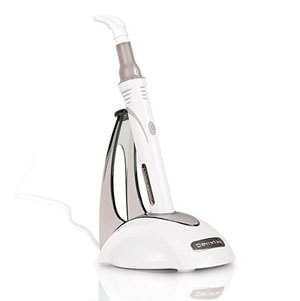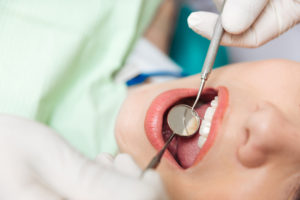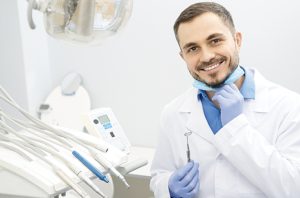Thinking about getting a teeth-whitening procedure done? Here are five popular and professional in-office treatments to consider, for a whiter brighter smile.
In recent years, due to the large influence of the media and social networking sites, there has been a much greater demand for perfect teeth and whiter, brighter smiles. Teeth whitening procedures have become more popular and one of the most requested dental procedures done every year. This process is achieved by the removal of the stain from the teeth or through a chemical reaction to lighten teeth.
Teeth-whitening is considered an aesthetic procedure as the main purpose is to enhance the physical appearance of the teeth and thereby improving the overall physical appearance of the patient. There are currently several teeth whitening options available to the consumer. These range from at-home teeth whitening products such as gels, toothpaste and films to in-office procedures that occur under the supervision of a dentist. Over time, teeth become stained from ageing, drinking red wine or coffee, and smoking cigarettes.
Teeth whitening can be defined as any process that removes stains and lightens the appearance of the teeth. However, the U.S Food and Drug Administration (FDA) stipulates that only products containing bleach (hydrogen peroxide or carbamide peroxide) can be termed as a bleaching agent, as these products remove surface and deep stains. Bleaching can thus be defined as the chemical degradation of chromogens.
While both store-bought and dentist teeth whitening products both contain the active ingredient peroxide, products used by a dentist may contain up to 35 percent to 45 percent peroxide while store-bought or over the counter teeth whitening products only contain 7 percent peroxide. Other ingredients found in in-office and over the counter products include glycerin, carbopol, sodium hydroxide, and flavorings.
Teeth have pores, and anything that is put into the mouth will be absorbed by the teeth and over time stains are formed on the teeth as a result. These stains will not go away unless they are actively removed. Teeth whitening agents contain active ingredients that temporarily open pores on the teeth and lift stains off of them.
Most people are candidates for a teeth whitening procedure and the qualifying criteria include mild to moderate tooth discoloration. Teeth whitening will not damage teeth if used as instructed. After treatment, teeth will naturally re-hydrate. Sensitivity after treatment is normal and rarely indicates a more serious problem. The sensitivity should subside within 12 to 36 hours after treatment and dentists will recommend a post fluoride treatment. There are, however, instances where this type of procedure is ineffective. If tooth discoloration is caused by medications or tooth injury, then teeth whitening procedures will not be effective or work at all. Certain types of discolorations may not bleach well or may not bleach at all, such as brown teeth, grey tones, or white spots. Synthetic materials, such as dental crowns, caps, fillings, porcelain veneers, or dental bonding on the front teeth, will not bleach at all, either.
In addition, some teeth problems may worsen if bleaching agents are applied to the teeth. These include teeth with worn enamel or sensitive teeth. The longer a teeth whitening agent is left on the teeth, the whiter the teeth will become. However, with bleaching agents that contain higher percentages of peroxide, the bleaching agent will only be left on for a short while, as leaving it on for too long will increase tooth sensitivity and dehydrate the tooth.
In-office treatments generally give faster results as the bleaching solution is much stronger. In order to speed up the teeth whitening process and intensify whitening of the teeth dentists utilize heat, light or a combination of the two. In-office visits usually last for 30 to 60 minutes and dramatic results are often achieved after several visits. Teeth brightness can increase by three to eight shades for some patients. Results can be maintained through regular brushing, flossing and rinsing. These results do not last forever and thus maintenance is required to ensure the longevity of the procedure.
Acidic foods should be avoided after treatments and these include tea and coffee, any kind of wine, sports drinks, soda, colored foods, and any kind of sauces. The most effective way to get the best results from a teeth whitening procedure is to consult with a dentist and have an in-office procedure performed. This will also be the safest way to achieve the desired results in the shortest amount of time.
Although stronger agents are used during in-office procedures, the procedure performed at a dentist’s office follows strict guidelines and protocols ensuring that the mouth and gums are protected. A dentist can customize the bleaching agent according to the needs of the client and will be able to manage any issues that may arise from the procedure such as tooth sensitivity. The American Dental Association (ADA) advises patients to consult with a licensed dentist to determine if bleaching/whitening is an appropriate course of action. After which, a decision can be made regarding the correct application, in order to achieve the desired results.
While at-home teeth whitening systems may only lighten teeth one shade, an in-office treatment may lighten teeth as much as ten shades. It is also advised to take the available budget into account before making a selection as to which treatment would be most fitted for the result that the patient wishes to achieve. Time consideration is another factor to take into account as certain products produce greater results in a much shorter time frame while other products may take much longer to achieve results. Although an in-office treatment may be faster and achieve greater results it is also more costly than an at-home procedure, which may take longer and produce less of the desired result, at a lower cost. When all factors have been taken into account, an informed decision can be made as to which treatment would be most appropriate.
Five common in-office treatments utilized by dentists include Bleach Bright, Bleaching, GLO Teeth Whitening, KOR Whitening, Sure Smile Teeth Whitening, ZOOM! Teeth Whitening.
















